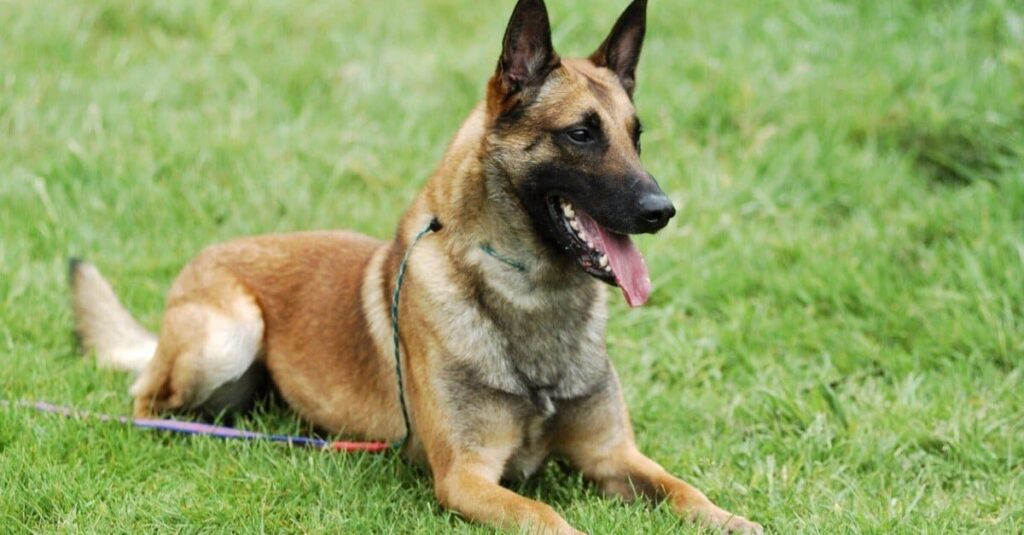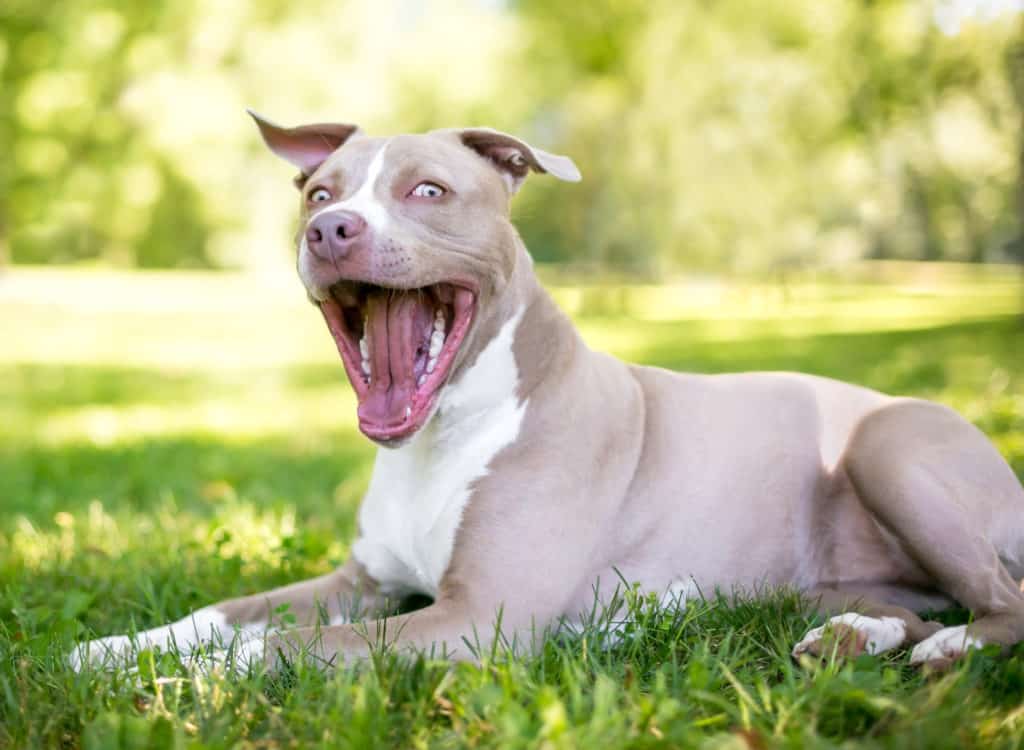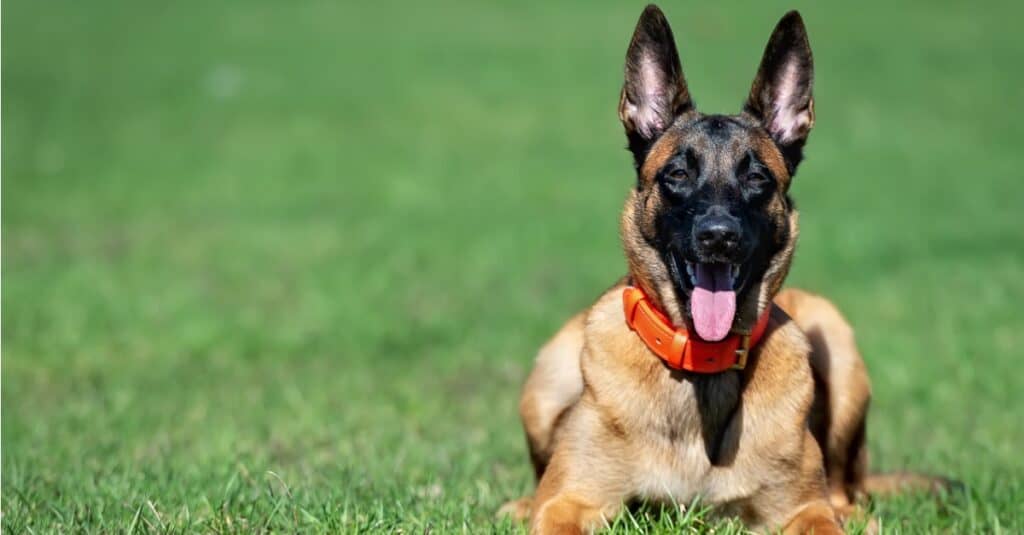The Belgian Malinois and the pit bull are two pretty different dogs! Belgian Malinois dogs were initially bred for herding. They are alert dogs with strong territorial and protective instincts. Pit bulls tend to be affectionate toward family and can tend toward dog aggression, particularly when poorly bred. The differences that exist between these breeds are studied in this article.
Keep reading to learn more about these awesome breeds!
Comparing Belgian Malinois vs Pit Bull

| Belgian Malinois | American Pit Bull Terrier | |
|---|---|---|
| Size | 22-26 inches, 45-75 pounds | 17-21 inches, 30-60 pounds |
| Coat Color | Fawn, mahogany, red, red sable, fawn sable | Can be any color except albino or merle |
| Lifespan | 14-16 years | 8-15 years |
| Temperament | Protective, energetic | Affectionate, energetic, can be dog aggressive |
| Training | Eager to please but needs an experienced owner | Eager to please but needs an experienced owner |
| Breed Recognition | AKC and UKC | UKC |
Key Differences Between Belgian Malinois and Pit Bull
The key difference between a Belgian Malinois and an American pit bull terrier is size. Belgian Malinois dogs are large, while pit bulls are medium.
Other differences include coat, lifespan, temperament, and breed recognition. These breeds also both have particular training needs.
Let’s dive in below to learn more about these wonderful dogs!
Belgian Malinois vs Pit Bull: Size

Belgian Malinois dogs are larger, maxing out at 26 inches in height.
©iStock.com/RKSS
American pit bull terriers are the smaller of the two, standing at 17-21 inches tall and weighing 30-60 pounds.
Belgian Malinois dogs are 22-26 inches tall and weigh in at 45-75 pounds.
When considering adoption, the size of your dog will determine three things: cost, handleability, and guarding ability. Larger dogs like the Belgian Malinois cost more to provide for. You’ll see this when buying food, getting medications from the vet, or even when buying everyday items like a collar or food dish.
The bigger the dog, the harder it will be to hold back on a leash or to lift in an emergency.
Lastly is a pro for large dogs—they are more imposing and likely to scare off threats. In this case, the Belgian Malinois also has a much stronger guarding instinct than a Pit Bull.
Belgian Malinois vs Pit Bull: Coat
Belgian Malinois and Pit Bulls can both be born with a multitude of fur colors, but the Pit Bull wins when it comes to variability due to its lax breed standard.
According to the AKC breed standard, Belgian Malinois dogs can be any of the following:
- Fawn
- Mahogany
- Red
- Red sable
- Fawn sable
They can also have black mask markings.
American pit bull terriers aren’t recognized by the AKC, as we’ll discuss below. However, the UKC specifies that the breed can be any color or combination of colors, excluding albino and merle.
This discourages the breeding of albino and merle dogs, which is a good thing to do the health risks associated with them!
Belgian Malinois vs Pit Bull: Lifespan

American pit bull terriers have slightly shorter lifespans, living 12-14 years.
©Mary Swift/Shutterstock.com
Belgian Malinois dogs live 14-16 years on average. This is a pretty long lifespan for a large dog!
Pit bulls don’t fall far behind at 12-14 years.
These averages won’t represent every dog out there, of course. Some lucky pups will live years longer, while others will sadly die younger.
American pit bull terriers are particularly at risk due to breed bans and misconceptions about the breed. They are euthanized often at shelters, particularly in areas where they cannot legally live as pets.
Belgian Malinois vs Pit Bull: Temperament
Both of these pups are energetic bundles of energy and love playing with toys! Belgian Malinois tend to have more protective instincts, meaning they make great guard dogs but need extra training so that they don’t become reactive toward strangers.
Pit bulls are known for being very affectionate, particularly toward their families! Many are clingy and love lying on the couch or in the bed next to their favorite person.
As with any clingy breed, it’s extra important to get them used to being alone slowly, keeping the experience short and positive. Building up over time, rather than leaving them to “cry it out” on their own, will help to prevent separation anxiety.
Lastly, poorly-bred pit bulls can, unfortunately, be predisposed to dog aggression. If you have other dogs at home, look for a shelter or rescue that tests their dogs with other animals. Some will even let you bring your current pup along to meet their new potential family member.
If purchasing from a breeder, it’s important to do your research and learn how to spot a reputable breeder. These breeders will breed dogs with good temperaments to lessen the chance of puppies with dog aggression.
However, it can’t ever be completely avoided—dogs are individuals, and any breed can become dog aggressive.
Despite the common myth, pit bulls don’t tend toward human aggression and are usually very loving! But, as we discussed above, there are aggressive dogs of every breed. A good upbringing is the best way to avoid aggression and reactivity in your pup.
Belgian Malinois vs Pit Bull: Training

Both dogs require a knowledgeable trainer to combat common behavioral issues for their breed.
©iStock.com/Sansargo
Both dogs are eager to please but require a knowledgeable trainer. Belgian Malinois have strong guarding instincts and a high prey drive. American pit bulls can be dog-aggressive.
Always keep your Malinois on a leash or in a properly enclosed space. Their prey drive can often overcome their training, and they might not recall well if they’re busy chasing an animal or object!
Both dogs should be well-socialized when young. This will help them to grow into confident adult dogs, rather than feeling afraid or becoming reactive in certain settings. Introduce your pup to a variety of noises, environments, people, and experiences. They should know how to be alone, how to interact with guests, and that the vacuum cleaner isn’t scary or a toy to chase… The list goes on!
If you do notice any form of reactivity or aggression in your dog, always put safety first. If needed, contact a certified dog behaviorist to help train your dog out of this behavior before it worsens.
Belgian Malinois vs Pit Bull: Breed Recognition
The American Kennel Club (AKC) doesn’t recognize the pit bull as a breed and notes that they’re against the generalization of bully breeds as well as breed bans.
American Staffordshire terriers, which are similar to American pit bull terriers, are recognized—but these two are different breeds, with pit bulls typically being larger.
The United Kennel Club recognizes the pit bull under the name American Pit Bull Terrier. It’s important to note that this is a particular dog breed, not a grouping of breeds.
Many people don’t actually know what a pit bull looks like and use the term to discuss any muscular, large-headed dog. (This especially happens in cases when the dog has been aggressive!)
Belgian Malinois dogs are recognized by both the AKC and UKC.
The photo featured at the top of this post is © Tara Lynn and Co/Shutterstock.com
Ready to discover the top 10 cutest dog breeds in the entire world?
How about the fastest dogs, the largest dogs and those that are -- quite frankly -- just the kindest dogs on the planet? Each day, AZ Animals sends out lists just like this to our thousands of email subscribers. And the best part? It's FREE. Join today by entering your email below.
Thank you for reading! Have some feedback for us? Contact the AZ Animals editorial team.






